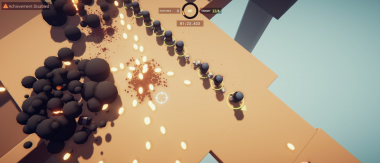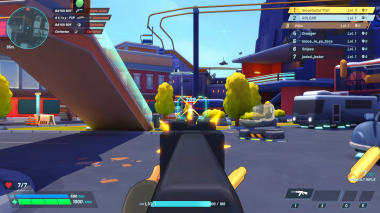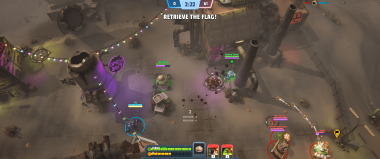It’s been a long time since I’ve played a good gladiator game.

The early 2000s were awash with entries to this genre, with titles like Gladius, Shadow of Rome, and Colosseum: Road to Freedom putting players in the thick of gladiatorial combat. With the exception of Ryse: Son of Rome (which I’m not entirely sure even counts), this seems to be an abandoned genre.
And then I was pointed in the general direction of We Who Are About to Die. A powerful title for just about anything, and more than appropriate for the “warriors of entertainment” from eras long past. WWAAtD combines roguelikes, management sims, and the glory of the Colosseum with a unique combat system to create something unlike anything else I’ve played in the past several years.
Let’s take a look at all of the good, the bad, and the bloody in this review of We Who Are About to Die.
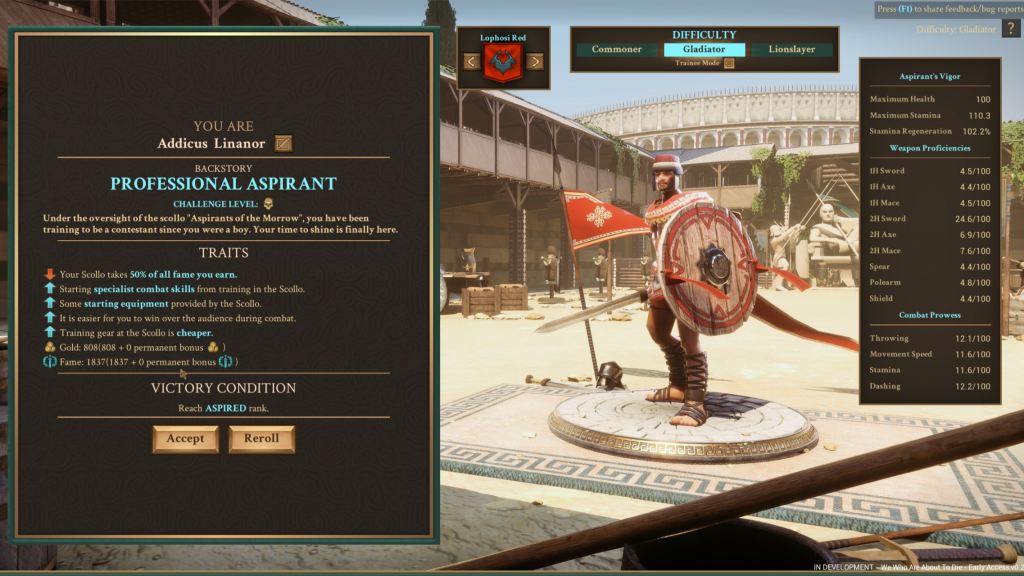
A Lone Wolf Game Developer
We Who Are About to Die is being developed and published by a one-man powerhouse of game development – Jordy Lakiere.
The Bruges-based creator cut his teeth on modding Mount & Blade, and moved on to working on this shockingly in-depth gladiator game after working in illustration and concept art for some time.
Having seen his very impressive artwork, it’s easy to say that Jordy is extremely talented. And after putting in some time with We Who Are About to Die, I would say that he has found his calling.
We Who Are About to Die is strange, but not in a way that is off-putting or aggravating. I found myself wanting to dig deeper into this game all the time, to fully understand its many interlocking systems and figure out how to “get good” at the intoxicating combat.
The game is still in early access at this point, and has been for over a year as of this review, but it’s plain to see that it is already going in the right direction.
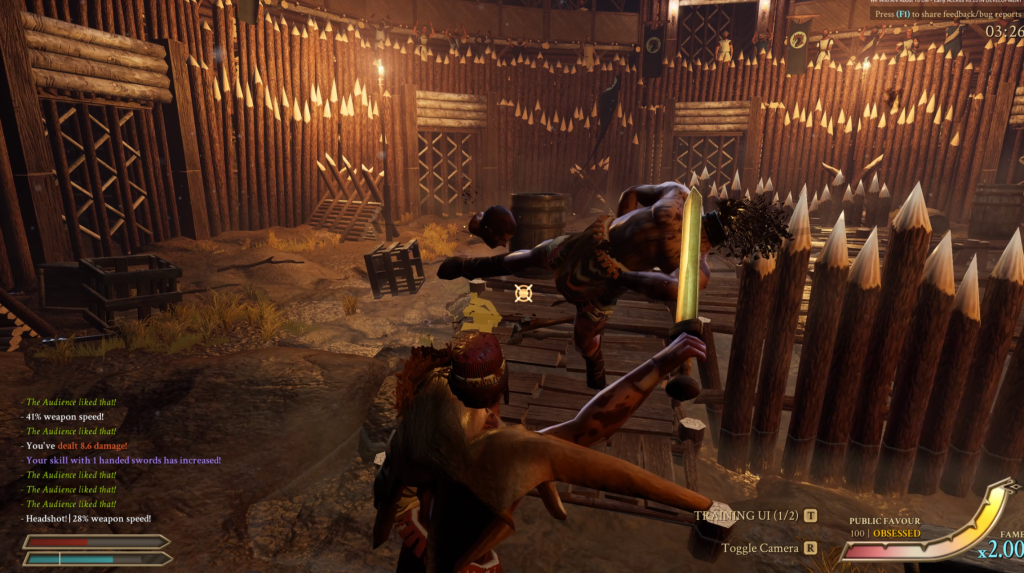
A Familiar Setting
If you played any of the gladiator games in their heyday, or have seen Ridley Scott’s definitive story in this time and place – Gladiator – you’ll know what to expect in We Who Are About to Die.
Massive crowds that gather to watch big, burly dudes hack away at each other with a variety of weapons. It’s effective if a little morbid, but this is what passed as entertainment in the first century A.D.
Oh, and sand. There’s plenty of sand.
Taking Control of Your Destiny
WWAAtD doesn’t waste any time. It drops you right into an easy-to-navigate tutorial after a short introduction, and as soon as you take control it’s clear that this game is different. Making your way through the training area reveals the physics-based combat, which is dynamic and offers a ton of control over even minor movements.
Jordy is very up-front about the complexity of the combat system he has created, warning that it will take time to understand and master in both the game’s Steam page and the introduction message that is displayed in the game before you get to do anything.
It’s true, I likened WWAAtD to QWOP at first blush. I was clumsy, and I felt like I was just swinging a sword around aimlessly. After some time though, it’s clear that the combat is designed this way to target specific body parts, and then direct your attacks to best capitalize on your opponent’s weaknesses.
After that realization, QWOP isn’t a fair comparison. A more apt parallel would probably be something like Mordhau or Chivalry – games where position, movement, and attack direction are critical things to think about on a second-to-second basis during combat.
Of course, this was my experience in third-person mode. There is also a “classic” camera perspective, which transforms the game into an isometric action game. In this mode, targeting points of weakness isn’t necessary, all you have to worry about is attack direction. It’s a simplified mode that I did enjoy, but the default third-person camera felt more visceral, and not being able to see opponents behind you adds a layer of tactical consideration in combat that I thought was very cool.
Just… maybe don’t get too attached to a single gladiator. As a roguelike RPG, each one you get is expendable, just like gladiators in real life! Every time one of your warriors falls in battle, they are gone for good, and you’ll have to start over with a new one. This makes sense considering the concept, and it makes every arena battle, every swing, and every dodge more intense.
While combat is the focus of the game, WWAAtD has a lot more going on under the hood.
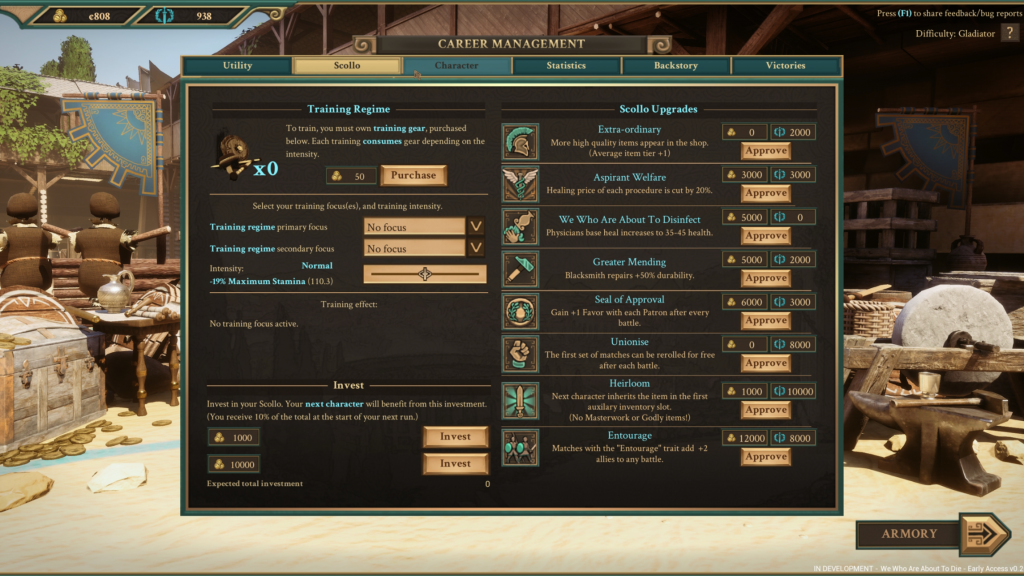
A Legend In and Out of the Arena
Shockingly, you’ll spend as much of your time in WWAAtD in menus prepping for battle as you do in the actual battles!
The simulation/management portion of the game is just as important, with a ton of options for training, gear, promotion, healing, upgrades, and more right at your fingertips after every fight. The majority of these carry over to a new gladiator when one dies, so there’s always a sense of progression even when you have to take a few steps back. It feels really well balanced and I was never as annoyed about it as I have been in other roguelikes.
I would say that, even if this kind of sim/management gameplay isn’t your cup of tea, it is integrated so well with the rest of the game that it feels wholly necessary and satisfying to interact with.

We Who Are About to Play
Overall, We Who Are About to Die is a fun and very impressive Steam Early Access title, especially as it has gone through most of its development with a single developer. If I wanted to nitpick, I could say that the graphics aren’t terribly impressive, or that combat feels janky for a while before it clicks, but none of that matters in the end. This game is fun, and it will no doubt continue to improve throughout its early access phase.
Plus, who doesn’t want to be a big tough gladiator every once in a while?




